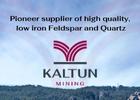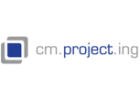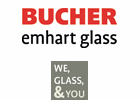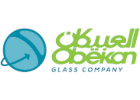INFO
Dies sind die Basisdaten für das ausgewählte Unternehmen. Diese Firma stellt weitere Informationen wie z.B. Webseite, Telefon- und Fax-Nummern, Ansprechpartner, Firmengeschichte, Details bereit.
Um diese Informationen einzusehen benötigen Sie einen gültigen "Profile Access" für glassglobal.com. Die Konditionen können Sie über folgenden Link: Preis Info einsehen
Kontakt Info
| Anschrift | Vidraria Mortágua Zona Industrial de Mortágua 3450-232 Mortágua |
| Land | Portugal |
| Ihre Nachricht an Vidraria Mortágua |
Produkte oder Maschinen
Single Glass
Single glass, as we know it, is an integral part of any building or decorative project.
This element assumes itself as an excellent thermal and acoustic insulation, depending on the shapes and applications to which is subject.
A single glass, even though it limits the space physically, it creates a feeling of open space.
Contact us for the best advice and suggestions on glass application.
Tempered Glass
This is a safety glass reinforced by heat treatment. This feature makes it a more resistant glass than ordinary glass with regard to thermal shocks and bending
When it breaks, the tempered glass dissolves in small and homogeneous fragments, avoiding risks for the user.
Due to the heat treatment, and after the same is applied, tempered glass cannot be subjected to cutting, puncture or stoning.
Its resistance allows it to be used in showcases, stairs, and steps or even partitions for bathrooms.
Laminated Glass
Named safety glass, the laminate shatters but does not disperse when broken. This is thanks to the intermediate layers of polyvinyl butyral (PVB) which bind the different glass plates. To better understand this effect, when the laminated glass suffers a certain impact, the shatter resembles a spider’s web.
The union of the glass plates with the layers of PVB ensures a better thermal and acoustic isolation.
We can see this type of glass on the windscreen of a car, in windows that require greater security (eg goldsmithery) or skylights.
Double Glass
Composed of two or more glasses forming an air or gas-tight chamber (SF6, argon or krypton). The sealing of this composition is ensured by a double sealing barrier, which assures mechanical scalability.
The double glass is an excellent thermal and acoustic isolation. It avoids those between interior and exterior, which induces a saving of energy consumption, as well as an excellent reduction of acoustic pollution.
Silk-Screen Printing
Screen-printed glass is a material that receives drawings or colors through silk-screen screens with special ink, whose content is fixed in the glass at very high temperatures.
This process, which ends in an oven so the paint to sticks to the plate at almost 600 degrees Celsius, produces a scratch-resistant material and grease stains on a glass that also gains resistance after the tempering process.
Tempered glass can also receive screen printing, under the condition that the metallization withstands the process – thus providing gains in solar control and thermal comfort.
In covers, stairs, facades, and guardrails, situations in which the process demands more security, the silkscreen can be made in laminated glass.





















